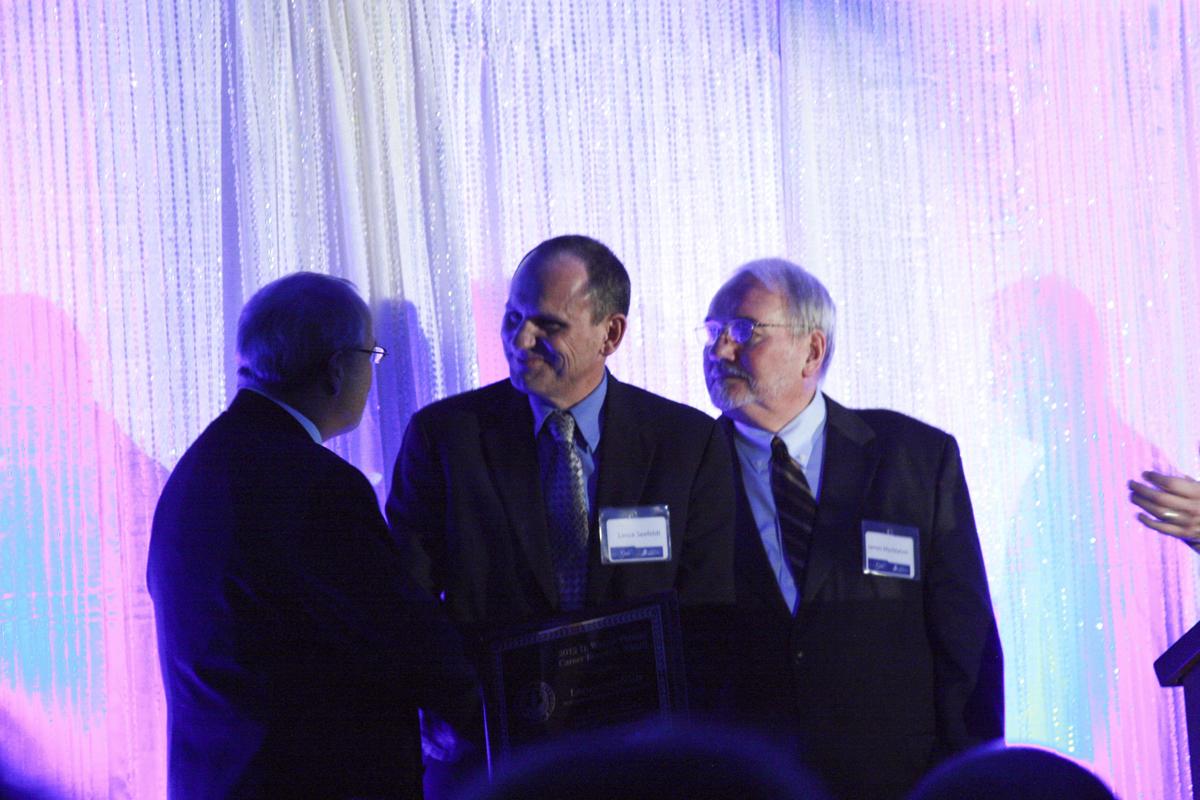USU recognizes life-sustaining research
When most people think of a food chain, they think of plants, animals eating those plants and predators devouring those animals. However, USU researchers are making groundbreaking discoveries that may affect the global food chain at the elemental level.
Professor of chemistry and biochemistry Lance Seefeldt, along with other researchers from USU and around the country, has unlocked several mysteries surrounding how bacterial enzymes – known as nitrogenases – transform nitrogen into compounds essential for plants and animals to survive.
“All life needs nitrogen,” Seefeldt said. “It’s part of our DNA, RNA and amino acids.”
Nitrogen makes up 80 percent of the air we breathe, but it is not in a form animals and plants can directly use, Seefeldt said. Two methods exist to convert nitrogen into ammonia, which can be absorbed by plants and then transferred to the animals that eat them, he said.
One of these methods is biological, he said, and uses nitrogenases. The other method is artificial and requires immense amounts of heat and pressure. This process, known as the Häber-Bosch process, currently uses two percent of the world’s oil, Seefeldt said.
The world relies on both forms of nitrogen conversion for crop fertilizers, he said. However, he added that he would like his research to someday be used to develop more efficient and effective fertilizers.
“It’s quite the irony,” he said. “We’re swimming in nitrogen, but it’s difficult to get our hands on it.”
Seefeldt – who recently received the D. Wynne Thorne Career Research Award, USU’s highest research honor – has been leading a team of researchers from USU, Virginia Tech, Northwestern University and University of Minnesota for the past 18 years in an effort to discover the mechanisms by which nitrogenases convert nitrogen into ammonia.
Brett Barney, former USU student and current professor at the University of Minnesota, compared the team’s experiments to capturing a single frame of a movie.
“You have to capture each step of the process in the act and freeze the frame, so you can actually examine it and understand what it does,” he said.
This process was accomplished in part by flash freezing nitrogenases in various phases of nitrogen conversion, Seefeldt said.
He said his team has discovered three of the steps of nitrogen conversion in nitrogenases, but there are other mechanisms yet to be explored.
“Hopefully, based on our research, scientists can develop simple and efficient catalysts for nitrogen fixation for modern industry and agriculture,” said Zhiyong Yang, one of the project’s researchers and doctoral student in Seefeldt’s lab. “From there plants will have enough food to produce food for humans and the other (living things) on this planet.”
The team published its latest findings in the March 27 issue of Proceedings of the National Academy of Sciences.
Seefeldt said this project has cost about $4 million over the past 18 years and has received funding from the National Institutes of Health and the National Science Foundation. In that time, his team has published 80 articles and other publications regarding their research, he said.
– rouchelle.brockman@aggiemail.usu.edu

